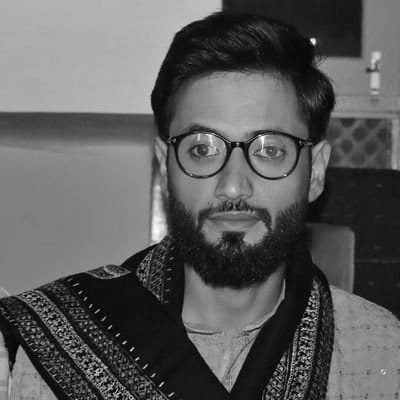"استمع للقصص الإنسانية وشارك في النقاش".. هكذا تعرّف قناة "الجزيرة الإنجليزية" نفسها على صفحتها على إنستغرام. عبارة من ست كلمات قد تبدو للوهلة الأولى عامّة، لكنها في الحقيقة تختصر روح الأداء الصحفي على المنصّة؛ الأنسنة والتفاعل. تختار الجزيرة الإنجليزية -كحال أغلب المؤسسات الصحفية- من بين أخبارها اليومية ما هو جاذب لتنشره على إنستغرام. ترى على صفحاتها الكثير من "ترامب"، ومن قصص السفر والنجاح.
إستراتيجيات تصميم المحتوى على إنستغرام لم يكن ليثير كل هذه الأسئلة لو لم تتحوّل المنصّة إلى مصدر أساسي للأخبار لدى شرائح واسعة من المتلقين. فكيف تتعامل المؤسسات الإعلامية مع إنستغرام؟ وهل تتخذها منصّة للنشر أم للترويج؟
لماذا يصعب تجنب السؤال حول إنستغرام؟
على إنستغرام حاليا يوجد 854.4 مليون مستخدم، ويتوقع أن يبلغ العدد 988 مليونا في العام 2023. (1) تقرير الصحافة الرقمية الصادر هذا العام عن معهد رويترز للإعلام (2)، يشير إلى أنّ الاعتماد على إنستغرام كمصدر لتلقي الأخبار قد تضاعف منذ العام 2018. ووجد التقرير أن 24% من المستجوبين من الفئة العمرية بين 18 و24 عاما في الولايات المتحدة، تلقوا الأخبار عن جائحة كورونا عبر إنستغرام، بينما استخدم 19% منصة "سنابشات" و6% منصة "تيك توك". والمفارقة أنّ 17% فقط اعتمدوا على الصحف للوصول إلى المعلومات.
على الصعيد العالمي، بلغت الأرقام مستويات أعلى. ففي ألمانيا، استخدم 38% من الفئة العمرية نفسها منصة إنستغرام حصرا للوصول إلى الأخبار، وفي الأرجنتين بلغت النسبة 49%.
في العالم العربي، أظهرت دراسة (3) نشرت عام 2019 أن 39% من الشباب يحصلون على أخبارهم عبر مواقع التواصل الاجتماعي، مقابل 4% فقط عبر الصحف.
لا مفرّ من إنستغرام إذا ما سعت المؤسسة الإعلامية للوصول إلى جيل Z (05-24 عاما)؛ وهو جيل صعب، ذو مزاج خاص جدا. 60% من المراهقين الذين يتلقون الأخبار عبر مواقع التواصل الاجتماعي، يقولون إنهم يحصلون عليها من المشاهير والمؤثرين أكثر من المؤسسات الإخبارية على تلك المنصات (4)، فهل تخوض الصحافة منافسة كهذه؟
مرحلة الاختبارات المبكرة
الاختلاف الكبير في مضمون المحتوى وشكله بين مؤسسة صحفية وأخرى على إنستغرام، يعدّ مؤشرا على أنّ الصحافة لم تحسم دورها على المنصّة بعد. تملك "نيويورك تايمز" (The New York Times) حوالي 10.5 ملايين متابع على إنستغرام، وتعتمد بشكل أساسي على القصة المصوّرة، إذ غالبية منشوراتها صور فوتوغرافية ترافقها نصوص متوسطة الحجم، تحيلك في ختامها إلى الرابط الأصلي للقصّة على موقع المؤسسة الإلكتروني. يمكنك أن تلاحظ بسهولة أنّ المواضيع تركز على السفر، وقضايا المرأة، والكثير (الكثير فعلا) من ترامب!
رغم أن الهدف هو الإحالة إلى الموقع الإلكتروني للصحيفة، فإنّ المؤسسة بدأت حديثا بسرد قصص كاملة عبر إنستغرام. مثال ذلك منشور يعرض خلاصات تحقيق استقصائي أنجزته "نيويورك تايمز" حول قضية التهرّب الضريبي للرئيس الأميركي دونالد ترامب، إذ لم تكتف بنشر صورة ترامب والإحالة إلى التقرير، بل عملت على اختصاره في مجموعة من النصوص بسيطة الصياغة والتصميم، في أحد أشكال السرد الصحفي الحديث التي تتميّز به منصّة إنستغرام بشكل خاص.
قناة "الجزيرة العربية" تتبنى إستراتيجية مختلفة. يمكنك أن تلحظ بسهولة التنوع الكبير في المحتوى البصري، واعتمادها على التصميمات الفنية. ونظرًا لنوعية إنتاجها القائم على الفيديو بشكل أساسي، تستفيد الجزيرة من "تلفزيون إنستغرام" (IGTV)، وتجد سهولة أكبر من منافسيها في الصحافة المكتوبة في استغلال المنصّة لنشر محتواها المرئي، وبالتالي تجاوز الوظيفة الترويجية.
في جولة سريعة على المواقع الصحفية الفاعلة على إنستغرام، مثل الغارديان والواشنطن بوست، ستلحظ مزيدا من التنوع في أساليب السرد الصحفي. "الواشنطن بوست" تعتمد على النصوص الكبيرة الحجم على خلفية سوداء ذات مضامين أقرب إلى الخبر العاجل. منشور مثل "البيت الأبيض يقدّم تصريحا مربكا وغير مفهوم عن وضع ترامب الصحي"، هو نموذج لأسلوب السرد الرئيسي المعتمد من قبلها. أما الغارديان فتميل إلى نشر أغلفة أعدادها ومقالاتها كنوع من الترويج المباشر.
من الصعب جدا أن نتنبأ بإستراتيجية المحتوى الصحفي على منصّة إنستغرام، إذ ما زالت المؤسسات في طور الاختبارات الأولى للسرد على المنصّة.
سمات حصرية جدا
برز مؤخرا مصطلح أكاديمي سمي "Ephemeral Journalism" ويعني "الصحافة السريعة الزوال" أو "صحافة اللحظة" (5). لا يحيل المصطلح إلى الصحافة الرقمية رغم ما تتسم به من سرعة وآنية، بل يشير تحديدا إلى المحتوى الصحفي الذي يظهر لمرّة واحدة ثم يزول، تماما مثل "إنستغرام ستوريز" (Instagram Stories).
بحسب الدراسة، تضيف سمة الزوال شعورا لدى المتلقي بأصالة المحتوى وأهميته، نظرا لأنّه عابر ولا يشعر المتلقي بملكيته، كما هو الحال سابقا في الصحف المطبوعة أو النشرات الإخبارية المتلفزة المتكررة على مدار اليوم الواحد.
السمات الحصرية لصحافة إنستغرام لا تنتهي هنا، فالأدوات التي توفرها المنصّة أسست لنوع جديد من السرد القصصي.
أطلقت صحيفة الغارديان عبر صفحتها على إنستغرام سلسلة "ستوريز" بعنوان "كذب أم حقيقة؟" (Fake or real?). الفكرة ببساطة تقوم على طرح فرضية واحدة كلّ فترة، مثل "اللاجئون السوريون أغلبهم من الشباب الذكور". يصوّت المتابعون على الفرضية بالإيجاب أو السلب عبر أداة تصويت، وبعد ساعات تعرض الصحيفة نتائج التصويت وتصرّح بالإجابة الصحيحة.
هذه المعالجة غير ممكنة على موقع الغارديان الإلكتروني، ولا على أيّ من منصاتها على وسائل التواصل الاجتماعي غير المزوّدة بخاصيّة "ستوريز". هذا النوع من السرد القصصي يتطلب أدوات محددة جدا، وإنستغرام أكثر من يوفرها.
أسباب التحوّل في السرد القصصي لا يرتبط فقط بالأدوات الجديدة، بل أيضا بنوع الجمهور النشط عليها. فمنصة "AJ+ عربي" مثلا، تشارك في أحد منشوراتها التوعوية ضد ثقافة الاغتصاب "GIF" كوميدية من فيلم للممثل عادل الإمام. هذه الحاجة إلى الخفّة التي تدفع المؤسسات الإعلامية لإضافة "GIFs" و"Emojis" و"Stickers" و"Memes" إلى صندوق أدواتها السردية، تدفع للسؤال حول إشكالية قيمة المحتوى على حساب الشكل.
المستقبل سردي أم ترويجي؟
"قد يأخذ إنستغرام مكان تويتر".. هكذا تفترض دراسة معهد رويترز للإعلام (6). ربما يعدّ هذا مؤشرا، أو تأكيدا على أنّ جزءا من الاستثمار الصحفي في المستقبل القريب جدا، سيكون لصالح منصّة إنستغرام. ويبدو أنّ المستقبل القريب قد بدأ بالفعل لدى بعض المؤسسات الكبرى.
فقد أطلقت "نيويورك تايمز" يوم 20 سبتمبر/أيلول 2020 -بالتعاون مع فيسبوك- سلسلة تقارير تعتمد على "الواقع المعزز" (Augmented Reality)، وهي مخصصة لمنصّة إنستغرام حصرا، وذلك "لمساعدة القراء على استكشاف وفهم العالم المتزايد التعقيد بطريقة أكثر شخصية" (7). ولدعم هذا العمل، أطلقت الصحيفة مختبرًا جديدًا للواقع المعزز ضم أكثر من عشرة موظفين جدد، في أول مبادرة طويلة المدى لإنتاج محتوى معزز على إنستغرام.
تجربة كهذه لا تلغي واقع أنّ 67.5% من المحتوى المتوفر على إنستغرام ما زال من النوع الترويجي لا السردي (8)، فهل يتغير هذا الواقع قريبا؟ تصعب الإجابة دون أخذ متغيرات عدّة في الحسبان، أهمها نموذج الربح المالي الذي قد توفره منصة إنستغرام للصحافة.
مصادر:
[1] https://www.statista.com/statistics/183585/instagram-number-of-global-u…
[2] https://reutersinstitute.politics.ox.ac.uk/sites/default/files/2020-06/…
[3] https://www.go-gulf.com/latest-trends-in-social-media-across-the-middle…
[4] https://www.businessinsider.com/instagram-could-be-untapped-news-distri…
[5] https://journals.sagepub.com/doi/pdf/10.1177/2056305119888657
[6] [6] https://reutersinstitute.politics.ox.ac.uk/sites/default/files/2020-06/…
[7] https://www.niemanlab.org/reading/the-new-york-times-and-facebook-launc…
[8] https://journals.sagepub.com/doi/pdf/10.1177/2056305119888657







































